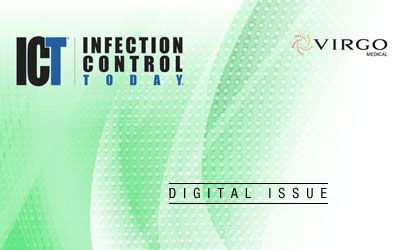Pathogen Persistence, Transmission and Cross-Contamination Prevention

A plethora of studies in the medical literature has demonstrated that nearly everything in the healthcare setting from surfaces, to healthcare workers' hands, to medical equipment and everything in between can serve as a reservoir and a vector for opportunistic pathogenic organisms.
The acquisition of infections in the healthcare facility is aided by a number of important factors, including the persistence of some bacteria and viruses on inanimate objects and surfaces for weeks and months; the lack of hand hygiene and sanitation in healthcare facilities; breaches in evidence-based infection prevention practices; the growing volume of patients admitted in acute-care hospitals and increasing clinical acuity of patients; and the growing shortage of healthcare professionals and the tendency to cut corners by staff members.
This special digital issue reviews what the medical literature reports on vectors for disease transmission and provides suggestions for cross-contamination prevention.




From the Derby to the Decontam Room: Leadership Lessons for Sterile Processing
April 27th 2025Elizabeth (Betty) Casey, MSN, RN, CNOR, CRCST, CHL, is the SVP of Operations and Chief Nursing Officer at Surgical Solutions in Overland, Kansas. This SPD leader reframes preparation, unpredictability, and teamwork by comparing surgical services to the Kentucky Derby to reenergize sterile processing professionals and inspire systemic change.
Show, Tell, Teach: Elevating EVS Training Through Cognitive Science and Performance Coaching
April 25th 2025Training EVS workers for hygiene excellence demands more than manuals—it requires active engagement, motor skills coaching, and teach-back techniques to reduce HAIs and improve patient outcomes.
The Rise of Disposable Products in Health Care Cleaning and Linens
April 25th 2025Health care-associated infections are driving a shift toward disposable microfiber cloths, mop pads, and curtains—offering infection prevention, regulatory compliance, and operational efficiency in one-time-use solutions.
Phage Therapy’s Future: Tackling Antimicrobial Resistance With Precision Viruses
April 24th 2025Bacteriophage therapy presents a promising alternative to antibiotics, especially as antimicrobial resistance continues to increase. Dr. Ran Nir-Paz discusses its potential, challenges, and future applications in this technology.